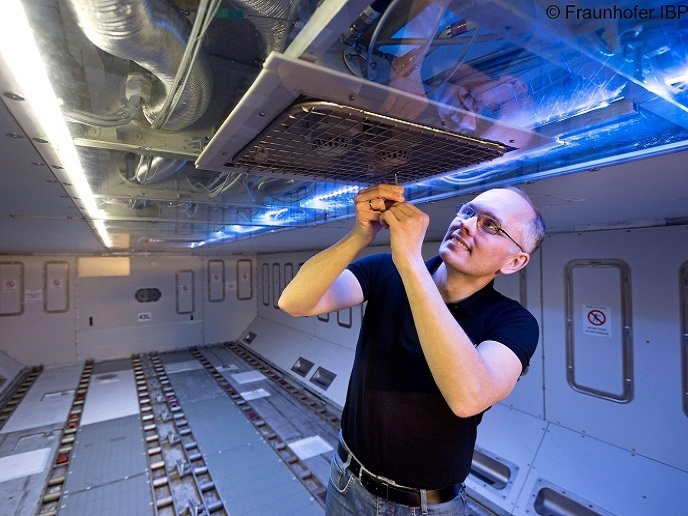Safe and environmentally friendly solutions for fire suppression in aircraft cargo holds
Fires in the cargo bay during flights can be catastrophic and preventing them at an early stage is crucial for the passengers’ survival and aircraft safety. The time has come to seek replacement for halons with efficient and environmentally friendly agents. Halon production has already been discontinued and an end-use date was set to 2040 in Montreal Protocol agreements(opens in new window). Substitutes are being reviewed on the basis of their ODP, global warming potential, toxicity, flammability, and exposure potential.
Green technology shows promising results
The EU-funded EFFICIENT consortium aimed to identify and test a potential alternative fire suppression agent against the acceptance criteria of the relevant Federal Aviation Administration Minimum Performance Standard (MPS) for Aircraft Cargo Compartment Halon Replacement Fire Suppression Systems as part of the Clean Sky(opens in new window) European research programme. “Project investigations showed that nitrogen possesses all the necessary characteristics to potentially replace Halon as a fire suppression agent for aircraft fire safety,” explains Suresh Sampath, Principle Investigator of the EFFICIENT project. Initially the team conducted small-scale cup-burner tests to estimate the design and extinguishing concentration of nitrogen. Miniaturised explosion vessel screening tests were also conducted. This work helped to define the necessary nitrogen concentration to be used in the large-scale fire experiments conducted at Cranfield University.
Meeting aviation industry standards
The cargo compartment simulator was designed and manufactured according to the requirements of the MPS and the dimensions are suitable for a wide-body aircraft. Sampath adds that, “the EFFICIENT Fire Knockdown System (EFKS) was designed and manufactured in accordance with RTCA DO-160G Environmental Conditions and Test Procedures for Airborne Equipment(opens in new window).” These were adapted for the cargo compartment simulator and used to supply the required quantity of nitrogen during the various fire test campaigns. The EFKS system rapidly provides an appropriate quantity of nitrogen to the cargo hold to suppress the fire quickly and effectively. An additional system that supplies nitrogen at a lower rate for approximately 30 minutes after initial high rate supply was successfully tested by Airbus and the Fraunhofer Institute for Building Physics facilities in Munich, Germany. “A challenging and complex task was completed and thanks to the excellent collaboration between all the participants,” says Sampath. A series of high-risk test runs were completed with excellent safety and minimal impact to the environment. Sampath concludes that the most important outcome was, “the evidence from the experimental results that the performance of nitrogen as a fire suppression agent was satisfactory and encouraging for future implementation. These results will trigger follow-up research until maturity of technology is reached and Halon 1301 can eventually be replaced by nitrogen, eliminating all the negative effects that Halon has on the environment.”







